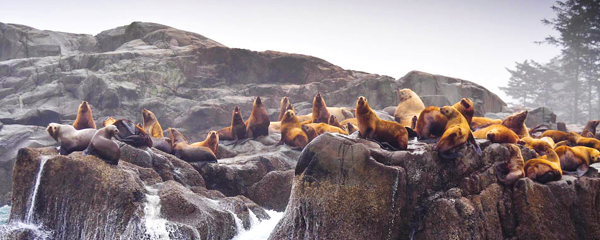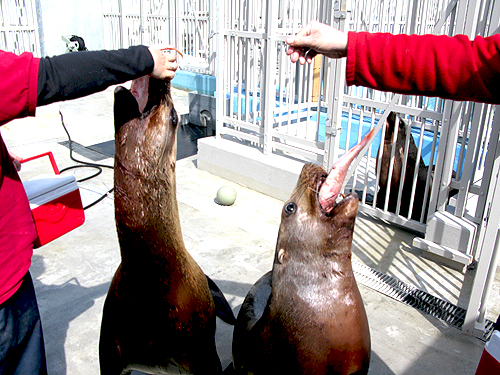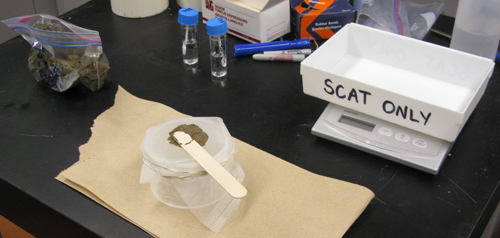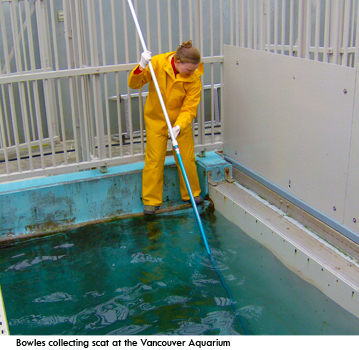
Using DNA analysis to solve a dietary dilemma
The mysterious decline of Steller sea lions in Western Alaska presents a complex scientific puzzle with many possible causes. One leading hypothesis suggests that changes in the availability of their key prey causes “nutritional stress” that affects their ability to survive and reproduce. This prompts several important questions: what kinds of prey are Steller sea lions eating, and how does this pattern vary between regions?
Seeking answers to these questions involves a combination of field and laboratory research, says Ella Bowles (The University of British Columbia), who led a study testing the effectiveness of a sophisticated DNA analysis technique called real-time polymerase chain reaction (PCR) to advance dietary research in the field. Her study was recently published in Molecular Ecology Resources.
“The main disadvantage in field research is that it’s difficult to assess what and how much a Steller sea lion is eating, when they spend so much time in the water, foraging out of view,” says Bowles. “We needed to find a non-invasive way to assess their diet that didn’t involve watching the animals forage.”

Steller sea lions at the Vancouver Aquarium being fed in Bowles’ feeding trials
Bowles’ study builds on prior research that proposes techniques for analyzing the contents of feces, or scat, collected from wild Steller sea lions. She tested the use of real-time PCR—a widely used DNA visualization technique—to determine the relative proportions of DNA from different types of prey found in scat samples.
DNA Cocktails
The primary goal of Bowles’ study was to verify the accuracy of real-time PCR in estimating the quantity of prey in a fecal sample. Her first step was to analyze a series of “DNA cocktails” she created by extracting DNA from rockfish, herring, squid and eulachon and combining them in various proportions. When the PCR analysis returned a result that was within 12% of the actual prey proportions, she knew she was ready to test her technique on field samples.
Scat Sampling
Fortunately, Consortium researchers had archived many fecal samples from a diet study conducted with Steller sea lions at the Vancouver Aquarium in 2006. Bowles extracted the DNA from these samples and found an encouragingly consistent and accurate picture of the diet consumed by the animals. This affirmed her technique, but left her with a nagging question: what about the huge range of diets across different areas of the North Pacific? What happens when the relative proportions of consumed prey changes?

Scat sampling
Bowles constructed a third study in which she fed 10 different diets to captive Steller sea lions at the Vancouver Aquarium, and analyzed the scats they produced. By focusing on the mitochondrial DNA (mtDNA) of each prey type in the scat samples, she was able to quantify the relative amounts of mtDNA in a sample to within 12%, including mtDNA from very small proportions of prey in single samples.
Advancing Policy
“My study focused on two components: what sea lions are eating, and how much,” Bowles says. “We showed that real-time PCR analysis can accurately provide quantitative information from fecal material, and I certainly see other researchers using this as a springboard to study other top-level species, such as walrus or northern fur seals.”

Bowles acknowledges that real-time PCR is just one of several tools which, used together, provide an accurate snapshot of Steller sea lion diets. However, she is excited at the potential of real-time PCR to offer a potentially game-changing tool for wildlife management in a number of species, including terrestrial animals. She says the quantitative information it provides about diets could eventually be incorporated into complex ecosystem models, which in turn may be used to evaluate fisheries and wildlife management policies governing entire populations.
“We still need a model to connect the proportion of prey consumed with the total prey biomass in a region,” Bowles acknowledges. “But real-time PCR can be done very quickly to establish an instantaneous snapshot of an area, which is useful for field researchers. It is a nice complement to other analytic techniques, and it helps to provide a more complete picture of the relationship between Steller sea lions and their prey.”
PUBLICATION
|

|

 |
||||||||||||
